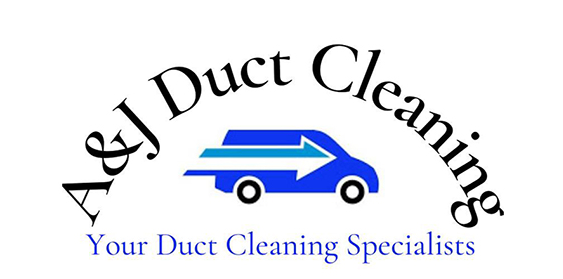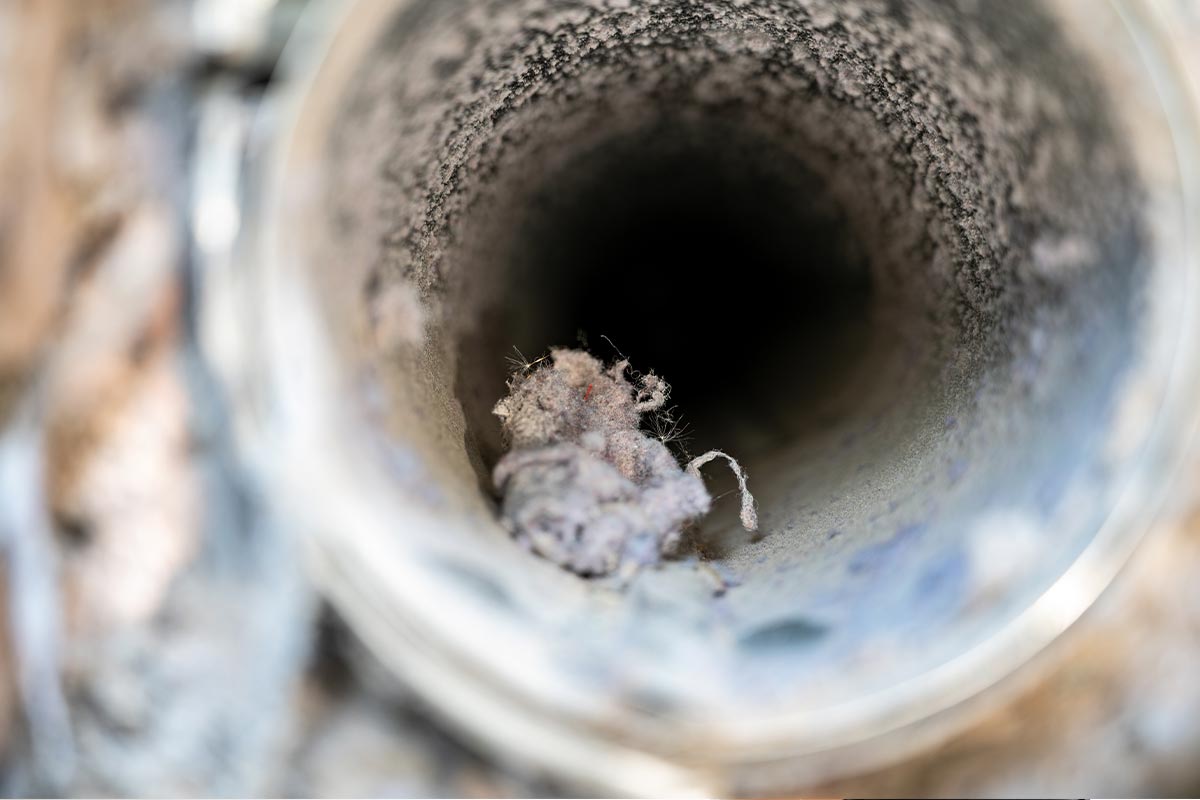Are you tired of constantly sneezing or experiencing poor indoor air quality? It might be time to take a closer look at your ductwork. Dirty ducts can harbor dust, allergens, and even mold, compromising the air you breathe. But how can you tell if your ducts are in need of cleaning? Pay attention to these signs of dirty ducts.
First, keep an eye out for excessive dust buildup around your vents. If you find yourself constantly dusting and cleaning, it could be a sign that your ducts are circulating dirty air throughout your home. If you notice a musty or unpleasant odor coming from your vents, this could indicate mold or mildew growth within your ducts. Finally, if you or your family members are experiencing unexplained allergies or respiratory issues, it’s worth considering whether dirty ducts could be the culprit.
Don’t let dirty ducts compromise your indoor air quality any longer. In our upcoming blog post, we’ll dive deeper into the signs of dirty ducts and discuss the importance of regular duct cleaning. Stay tuned!
Why Clean Ducts Matter
Improve Indoor Air Quality
Clean ducts are essential for maintaining good indoor air quality. When your ducts are dirty, they can become a breeding ground for dust, pollen, mold, and other allergens. These contaminants can circulate throughout your home every time your HVAC system turns on, leading to poor air quality and potential health issues.
By regularly cleaning your ducts, you can remove these harmful particles and improve the air you breathe. Clean ducts help reduce allergy symptoms, respiratory problems, and other health concerns associated with poor indoor air quality. You and your family deserve to breathe clean, fresh air in your home.
Enhance Energy Efficiency
Did you know that dirty ducts can impact the energy efficiency of your HVAC system? When dust and debris accumulate in your ductwork, it creates a barrier that restricts the airflow. This means that your HVAC system has to work harder to push air through the clogged ducts, resulting in increased energy consumption and higher utility bills.
By keeping your ducts clean, you can ensure optimal airflow throughout your home. This allows your HVAC system to operate more efficiently, saving you money on energy costs. A well-maintained system will have a longer lifespan, reducing the need for frequent repairs or replacements.
Promote Overall Health
Clean ducts play a crucial role in promoting overall health and well-being. As mentioned earlier, dirty ducts can harbor allergens and contaminants that can trigger allergies, asthma attacks, and other respiratory issues. By knowing when to clean home ducts and removing these pollutants from your ductwork, you create a healthier living environment for yourself and your loved ones.
In addition to improving indoor air quality, clean ducts also contribute to a cleaner home. Dust and debris from dirty ducts can settle on surfaces throughout your house, requiring more frequent cleaning. By keeping your ducts clean, you can minimize dust accumulation and enjoy a cleaner living space.
Maintaining clean ducts is an investment in your health, comfort, and energy efficiency. Regular professional duct cleaning can help you achieve these benefits and ensure a healthier and more comfortable home for you and your family.
Common Signs of Dirty Ducts
Dust and Debris Blockage
If you suspect your ducts are dirty, there are a few signs to look out for. First, pay attention to the airflow in your home. If you notice that it feels restricted or weak, this could be an indication of dust buildup in your ducts. Another clue is visible debris around the vent openings. Take a look and see if you can spot any dust or dirt gathering near the vents, which could be duct cleaning indicators.
Bad Odors
Another sign of dirty ducts is the presence of bad odors coming from your vents. If you detect unusual smells when your HVAC system is running, it could be a sign that there is dirt or debris trapped in your ducts. Pay attention to whether these odors worsen when the system is on. It’s important to consider other possible sources of odors as well, such as pets or food, but if the smells persist, it’s worth investigating your ducts.
Mold or Mildew Presence
Dirty ducts can also harbor mold and mildew, which can lead to health issues. Look for dark spots or discoloration in your ducts, as this could indicate mold growth. If you notice musty odors coming from your vents, it’s a strong sign that there may be mold or mildew present and it’s time for residential duct cleaning signs. Keep in mind that moisture issues can contribute to mold growth, so addressing any water leaks or excess humidity is crucial.
Pest Infestation
Dirty ducts can attract pests like insects and rodents. Watch for droppings or nests near the openings of your ducts. If you hear scratching or scurrying noises coming from inside the ducts, it may suggest a pest infestation. Be vigilant in checking for signs of insects or rodents in your home, as they can cause damage to both your ductwork and overall indoor air quality.
Rapid Dust Accumulation
Lastly, if you find that dust settles on surfaces in your home quickly after cleaning, it could be a sign of dirty ducts. Monitor how dust levels change after you’ve cleaned your home thoroughly. If you notice a significant accumulation shortly after cleaning, it may indicate that your ducts need attention. Assess the effectiveness of your cleaning routine and consider addressing the root cause of the excessive dust.
Effects of Dirty Ducts on Health
Worsening Allergy Symptoms
When it comes to the effects of dirty ducts on your health, one of the most noticeable signs is the worsening of allergy symptoms. If you find that your allergies are more severe when you’re indoors compared to when you’re outside, it could be a clear indication that your ducts need cleaning. Dust, pollen, pet dander, and other allergens can accumulate in your ductwork over time, circulating through your home every time your HVAC system operates.
To determine if your symptoms improve after duct cleaning, pay close attention to any changes in your allergies. Are you experiencing less sneezing, itching, or congestion? Do you notice a decrease in watery eyes or a runny nose? Cleaning your ducts can help remove these irritants and provide relief from allergy symptoms. However, it’s important to note that seasonal changes can also affect allergen levels, so consider this factor as well.
Respiratory Issues
Another significant effect of dirty ducts on your health is the potential for respiratory issues. If you’ve been experiencing an increase in coughing or sneezing while at home, it’s worth evaluating whether these problems correlate with the use of your HVAC system. Contaminants trapped in your ducts can irritate your respiratory system, leading to persistent coughing fits or frequent sneezing.
If you have concerns about the air quality in your home and suspect that dirty ducts may be contributing to respiratory issues, it is advisable to consult with health professionals. They can help assess the situation and provide guidance on improving indoor air quality. Regular cleaning and maintenance of your ductwork can help minimize the presence of harmful particles and promote better respiratory health for you and your family.
Impact on HVAC System Efficiency
Dirty ducts can have a significant impact on the efficiency of your HVAC system. Here are some signs to look out for:
Poor Airflow
To determine if your ducts are dirty, test the airflow strength from the vents in different rooms. If you notice weak airflow or inconsistent airflow throughout your home, it could be a sign of dirty ducts. Pay attention to rooms that feel hotter or colder than others, as this can also indicate airflow issues. To further assess the situation, measure temperature differences between rooms to identify any potential airflow problems.
Increased Energy Bills
Dirty ducts can lead to increased energy bills. To determine if your energy bills have gone up due to dirty ducts, compare them before and after HVAC maintenance. If you notice a significant increase in your bills after a period of neglecting duct cleaning, it could be a sign that your ducts are dirty and affecting the efficiency of your HVAC system. By improving the cleanliness and efficiency of your ducts, you may be able to calculate potential savings on your energy bills.
Inefficient Heating or Cooling
If your home feels unevenly heated or cooled, it could be a result of dirty ducts. Take note if certain areas of your home are consistently warmer or cooler than others. If you find that your HVAC system runs longer than usual to reach the desired temperature, it may be a sign of inefficient heating or cooling caused by dirty ducts. Evaluating the comfort levels in different areas of your home can help you identify any potential issues with your HVAC system’s efficiency.
Regular maintenance and cleaning of your ducts can help improve the efficiency of your HVAC system and prevent these issues. By addressing any signs of dirty ducts promptly, you can ensure optimal performance and energy savings.
When to Consider Professional Cleaning
Signs of Dirty Ducts
If you’ve noticed any of the following signs, it may be time to consider professional cleaning for your ducts:
Reduced Airflow
Do you feel like the airflow from your vents has decreased? Are certain rooms in your home not getting enough air? These could be indicators of dirty ducts. When to clean home ducts, over time, dust, debris, and other contaminants can accumulate in your ductwork, obstructing the flow of air. This can result in reduced airflow and uneven distribution of heat or cool air throughout your home.
Visible Dust or Debris
Take a look at the vents in your home. Do you see visible dust or debris around them? If so, it’s likely that there is a buildup of dirt and contaminants within your ducts. As air circulates through the system, these particles can settle on the surfaces of your vents, indicating that they are also present within the ductwork.
Strange Odors
Have you noticed any unusual smells or residential duct cleaning signs coming from your vents when your HVAC system is running? Foul odors can be a sign of mold, mildew, or other microbial growth within your ducts. These organisms thrive in dark, damp environments and can cause unpleasant odors to be circulated throughout your home.
Allergy Symptoms
If you or anyone in your household is experiencing increased allergy symptoms such as sneezing, coughing, or watery eyes, dirty ducts could be to blame. Dust mites, pollen, pet dander, and other allergens can accumulate in your ductwork and be released into the air whenever your HVAC system operates.
Final Remarks
In conclusion, dirty ducts can have a significant impact on both your health and the efficiency of your HVAC system. By understanding the common signs of dirty ducts and their effects, you can take proactive steps to ensure a clean and healthy environment in your home or workplace. Regular professional cleaning is crucial to remove accumulated dust, allergens, and contaminants from your ducts, improving the air quality and reducing the risk of respiratory issues. Clean ducts can enhance the efficiency of your HVAC system, leading to lower energy consumption and reduced utility bills.
To maintain clean ducts, consider scheduling regular professional cleaning every few years or more frequently if you notice any signs of dirt or blockage. It’s also important to change your air filters regularly and keep your home or workplace clean to minimize the accumulation of dust and debris in your ducts. By prioritizing the cleanliness of your ducts, you can create a healthier and more comfortable living or working environment for yourself and those around you.

